12.28: Vertebrate Classification
- Page ID
- 1411
\( \newcommand{\vecs}[1]{\overset { \scriptstyle \rightharpoonup} {\mathbf{#1}} } \)
\( \newcommand{\vecd}[1]{\overset{-\!-\!\rightharpoonup}{\vphantom{a}\smash {#1}}} \)
\( \newcommand{\dsum}{\displaystyle\sum\limits} \)
\( \newcommand{\dint}{\displaystyle\int\limits} \)
\( \newcommand{\dlim}{\displaystyle\lim\limits} \)
\( \newcommand{\id}{\mathrm{id}}\) \( \newcommand{\Span}{\mathrm{span}}\)
( \newcommand{\kernel}{\mathrm{null}\,}\) \( \newcommand{\range}{\mathrm{range}\,}\)
\( \newcommand{\RealPart}{\mathrm{Re}}\) \( \newcommand{\ImaginaryPart}{\mathrm{Im}}\)
\( \newcommand{\Argument}{\mathrm{Arg}}\) \( \newcommand{\norm}[1]{\| #1 \|}\)
\( \newcommand{\inner}[2]{\langle #1, #2 \rangle}\)
\( \newcommand{\Span}{\mathrm{span}}\)
\( \newcommand{\id}{\mathrm{id}}\)
\( \newcommand{\Span}{\mathrm{span}}\)
\( \newcommand{\kernel}{\mathrm{null}\,}\)
\( \newcommand{\range}{\mathrm{range}\,}\)
\( \newcommand{\RealPart}{\mathrm{Re}}\)
\( \newcommand{\ImaginaryPart}{\mathrm{Im}}\)
\( \newcommand{\Argument}{\mathrm{Arg}}\)
\( \newcommand{\norm}[1]{\| #1 \|}\)
\( \newcommand{\inner}[2]{\langle #1, #2 \rangle}\)
\( \newcommand{\Span}{\mathrm{span}}\) \( \newcommand{\AA}{\unicode[.8,0]{x212B}}\)
\( \newcommand{\vectorA}[1]{\vec{#1}} % arrow\)
\( \newcommand{\vectorAt}[1]{\vec{\text{#1}}} % arrow\)
\( \newcommand{\vectorB}[1]{\overset { \scriptstyle \rightharpoonup} {\mathbf{#1}} } \)
\( \newcommand{\vectorC}[1]{\textbf{#1}} \)
\( \newcommand{\vectorD}[1]{\overrightarrow{#1}} \)
\( \newcommand{\vectorDt}[1]{\overrightarrow{\text{#1}}} \)
\( \newcommand{\vectE}[1]{\overset{-\!-\!\rightharpoonup}{\vphantom{a}\smash{\mathbf {#1}}}} \)
\( \newcommand{\vecs}[1]{\overset { \scriptstyle \rightharpoonup} {\mathbf{#1}} } \)
\( \newcommand{\vecd}[1]{\overset{-\!-\!\rightharpoonup}{\vphantom{a}\smash {#1}}} \)
\(\newcommand{\avec}{\mathbf a}\) \(\newcommand{\bvec}{\mathbf b}\) \(\newcommand{\cvec}{\mathbf c}\) \(\newcommand{\dvec}{\mathbf d}\) \(\newcommand{\dtil}{\widetilde{\mathbf d}}\) \(\newcommand{\evec}{\mathbf e}\) \(\newcommand{\fvec}{\mathbf f}\) \(\newcommand{\nvec}{\mathbf n}\) \(\newcommand{\pvec}{\mathbf p}\) \(\newcommand{\qvec}{\mathbf q}\) \(\newcommand{\svec}{\mathbf s}\) \(\newcommand{\tvec}{\mathbf t}\) \(\newcommand{\uvec}{\mathbf u}\) \(\newcommand{\vvec}{\mathbf v}\) \(\newcommand{\wvec}{\mathbf w}\) \(\newcommand{\xvec}{\mathbf x}\) \(\newcommand{\yvec}{\mathbf y}\) \(\newcommand{\zvec}{\mathbf z}\) \(\newcommand{\rvec}{\mathbf r}\) \(\newcommand{\mvec}{\mathbf m}\) \(\newcommand{\zerovec}{\mathbf 0}\) \(\newcommand{\onevec}{\mathbf 1}\) \(\newcommand{\real}{\mathbb R}\) \(\newcommand{\twovec}[2]{\left[\begin{array}{r}#1 \\ #2 \end{array}\right]}\) \(\newcommand{\ctwovec}[2]{\left[\begin{array}{c}#1 \\ #2 \end{array}\right]}\) \(\newcommand{\threevec}[3]{\left[\begin{array}{r}#1 \\ #2 \\ #3 \end{array}\right]}\) \(\newcommand{\cthreevec}[3]{\left[\begin{array}{c}#1 \\ #2 \\ #3 \end{array}\right]}\) \(\newcommand{\fourvec}[4]{\left[\begin{array}{r}#1 \\ #2 \\ #3 \\ #4 \end{array}\right]}\) \(\newcommand{\cfourvec}[4]{\left[\begin{array}{c}#1 \\ #2 \\ #3 \\ #4 \end{array}\right]}\) \(\newcommand{\fivevec}[5]{\left[\begin{array}{r}#1 \\ #2 \\ #3 \\ #4 \\ #5 \\ \end{array}\right]}\) \(\newcommand{\cfivevec}[5]{\left[\begin{array}{c}#1 \\ #2 \\ #3 \\ #4 \\ #5 \\ \end{array}\right]}\) \(\newcommand{\mattwo}[4]{\left[\begin{array}{rr}#1 \amp #2 \\ #3 \amp #4 \\ \end{array}\right]}\) \(\newcommand{\laspan}[1]{\text{Span}\{#1\}}\) \(\newcommand{\bcal}{\cal B}\) \(\newcommand{\ccal}{\cal C}\) \(\newcommand{\scal}{\cal S}\) \(\newcommand{\wcal}{\cal W}\) \(\newcommand{\ecal}{\cal E}\) \(\newcommand{\coords}[2]{\left\{#1\right\}_{#2}}\) \(\newcommand{\gray}[1]{\color{gray}{#1}}\) \(\newcommand{\lgray}[1]{\color{lightgray}{#1}}\) \(\newcommand{\rank}{\operatorname{rank}}\) \(\newcommand{\row}{\text{Row}}\) \(\newcommand{\col}{\text{Col}}\) \(\renewcommand{\row}{\text{Row}}\) \(\newcommand{\nul}{\text{Nul}}\) \(\newcommand{\var}{\text{Var}}\) \(\newcommand{\corr}{\text{corr}}\) \(\newcommand{\len}[1]{\left|#1\right|}\) \(\newcommand{\bbar}{\overline{\bvec}}\) \(\newcommand{\bhat}{\widehat{\bvec}}\) \(\newcommand{\bperp}{\bvec^\perp}\) \(\newcommand{\xhat}{\widehat{\xvec}}\) \(\newcommand{\vhat}{\widehat{\vvec}}\) \(\newcommand{\uhat}{\widehat{\uvec}}\) \(\newcommand{\what}{\widehat{\wvec}}\) \(\newcommand{\Sighat}{\widehat{\Sigma}}\) \(\newcommand{\lt}{<}\) \(\newcommand{\gt}{>}\) \(\newcommand{\amp}{&}\) \(\definecolor{fillinmathshade}{gray}{0.9}\)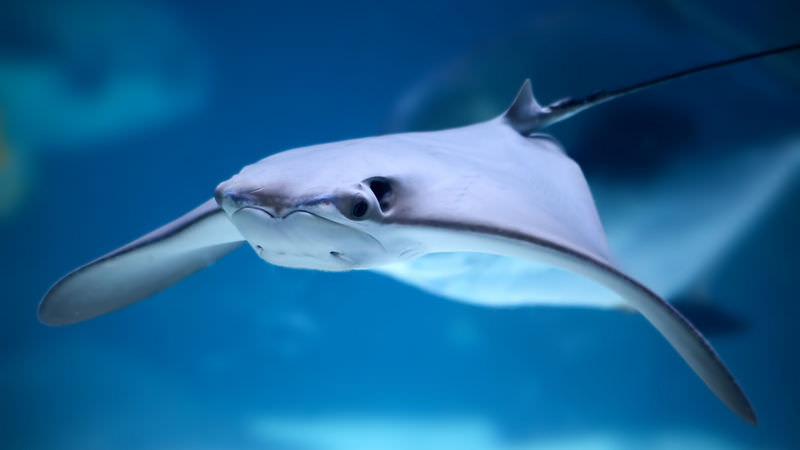
The stingray. Fish?
Of course. But what type? Of the nine classes of vertebrates, five are fish. Each of the five classes has distinguishing characteristics that allow members to be classified appropriately. Stingray are cartilaginous fish, related to sharks.
Vertebrate Classification
There are about 50,000 vertebrate species, and they are placed in nine different classes. Five of the classes are fish. The other classes are amphibians, reptiles, birds, and mammals. Table below lists some of the distinguishing traits of each class. Classes are listed in order of evolution.
| Class | Distinguishing Traits | Example |
|---|---|---|
| Hagfish | They have a cranium but no backbone; they do not have jaws; their endoskeleton is made of cartilage; they are ectothermic. |
hagfish 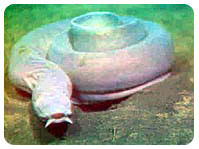 |
| Lampreys | They have a partial backbone; they do not have jaws; their endoskeleton is made of cartilage; they are ectothermic. |
lamprey  |
| Cartilaginous Fish | They have a complete backbone; they have jaws; their endoskeleton is made of cartilage; they are ectothermic. |
shark 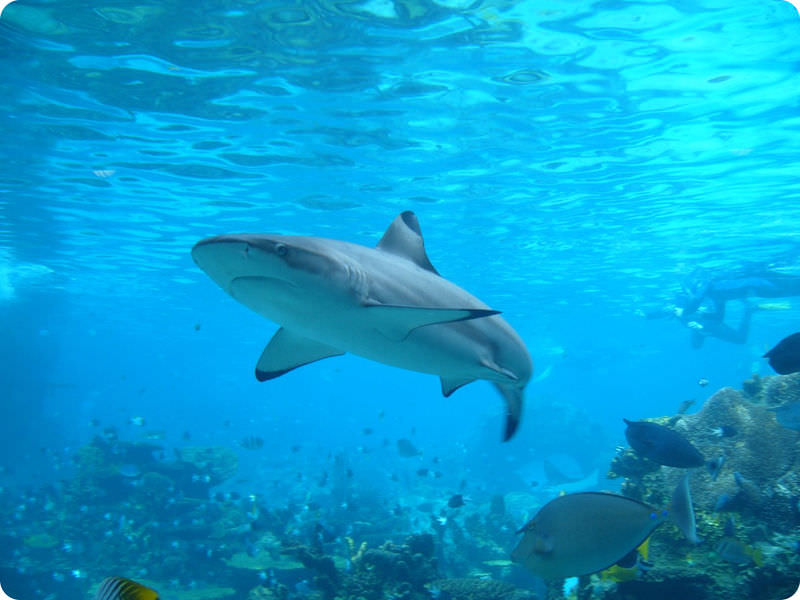 |
| Ray-Finned Fish | They have a backbone and jaws; their endoskeleton is made of bones; they have thin, bony fins; they are ectothermic. |
perch 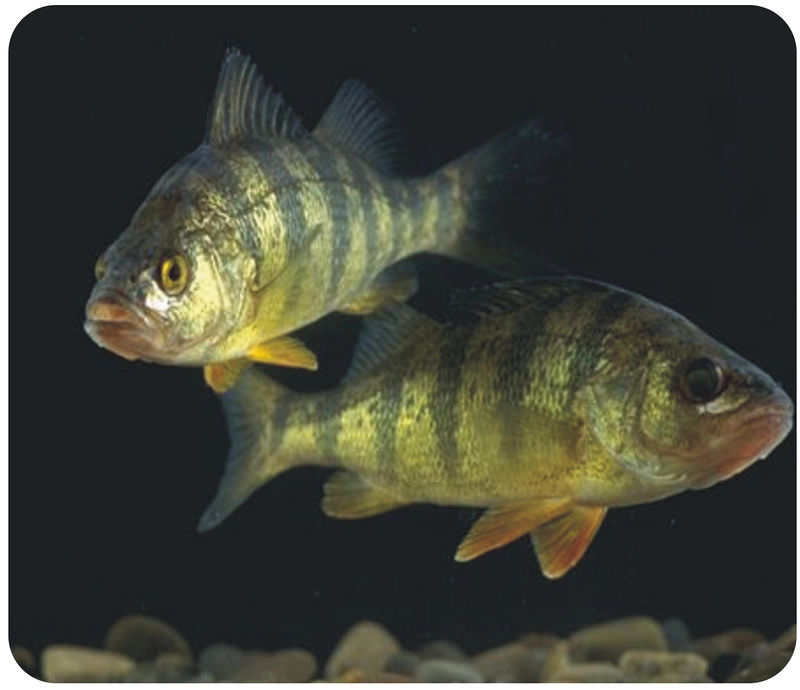 |
| Lobe-Finned Fish | They have a backbone and jaws; their endoskeleton is made of bones; they have thick, fleshy fins; they are ectothermic. |
coelacanth 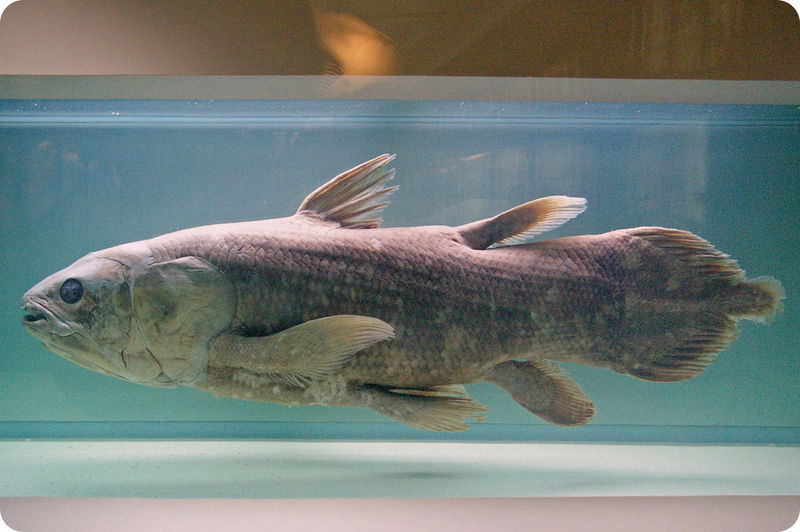 |
| Amphibians | They have a bony endoskeleton with a backbone and jaws; they have gills as larvae and lungs as adults; they have four limbs; they are ectothermic |
frog 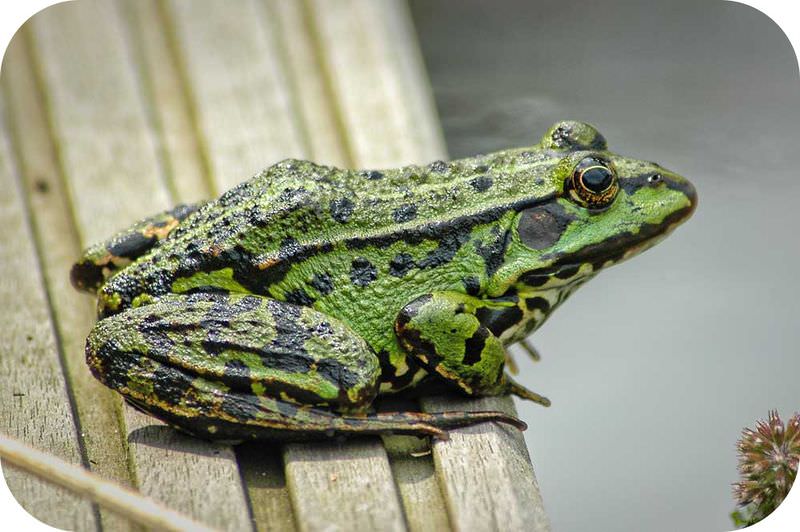 |
| Reptiles | They have a bony endoskeleton with a backbone and jaws; they breathe only with lungs; they have four limbs; their skin is covered with scales; they have amniotic eggs; they are ectothermic. |
alligator 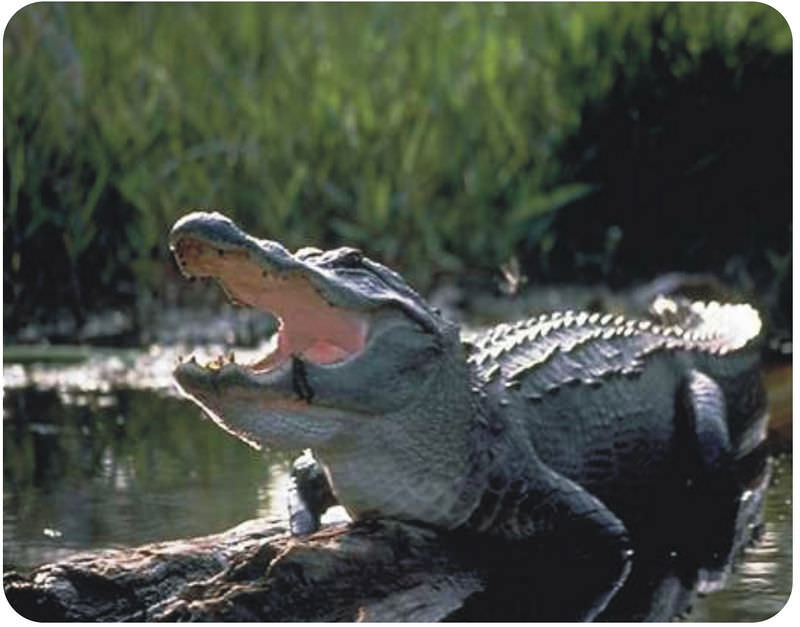 |
| Birds | They have a bony endoskeleton with a backbone but no jaws; they breathe only with lungs; they have four limbs, with the two front limbs modified as wings; their skin is covered with feathers; they have amniotic eggs; they are endothermic. |
bird  |
| Mammals | They have a bony endoskeleton with a backbone and jaws; they breathe only with lungs; they have four limbs; their skin is covered with hair or fur; they have amniotic eggs; they have mammary (milk-producing) glands; they are endothermic. |
bear  |
Summary
- The 50,000 species of living vertebrates are placed in nine classes: hagfish, lampreys, cartilaginous fish, ray-finned fish, lobe-finned fish, amphibians, reptiles, birds, and mammals.
Review
- Which was the first and last vertebrate classes to evolve?
- What are the five fish vertebrate classes?
- What are the defining characteristics of mammals?
- What was the first class of vertebrates to live on land?
- Sharks belong to what vertebrate class?
| Image | Reference | Attributions |
 |
[Figure 1] | Credit: Top to bottom: Bryce McQuillan; Dr. James P. McVey, NOAA Sea Grant Program; Scott Oves Source: Top to bottom: www.flickr.com/photos/spidermanbryce2006/1802722621/ ; www.photolib.noaa.gov/htmls/reef0206.htm ; http://www.flickr.com/photos/silicon640c/5968047195/ License: Top to bottom CC BY 2.0; Public Domain; CC BY 2.0 |
 |
[Figure 2] | License: CC BY-NC |
 |
[Figure 3] | License: CC BY-NC |
 |
[Figure 4] | License: CC BY-NC |
 |
[Figure 5] | License: CC BY-NC |
 |
[Figure 6] | License: CC BY-NC |
 |
[Figure 7] | License: CC BY-NC |
 |
[Figure 8] | License: CC BY-NC |
 |
[Figure 9] | License: CC BY-NC |
 |
[Figure 10] | License: CC BY-NC |

